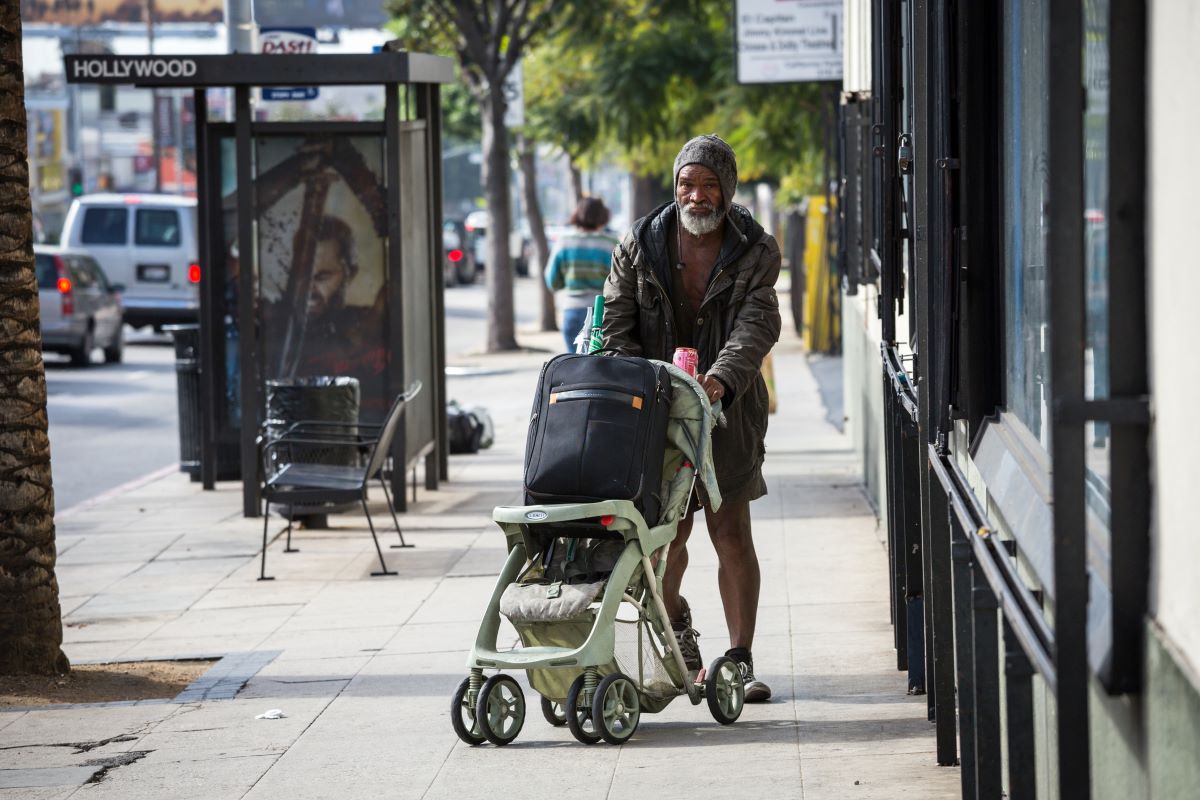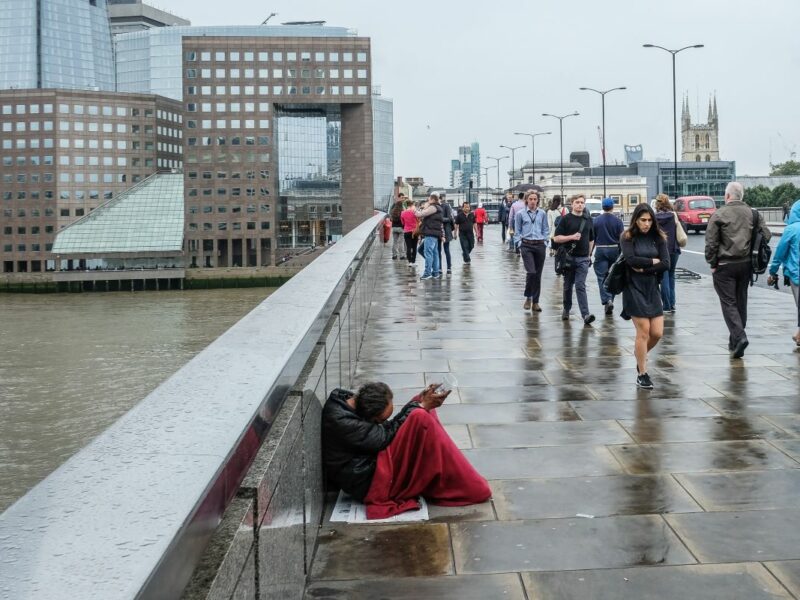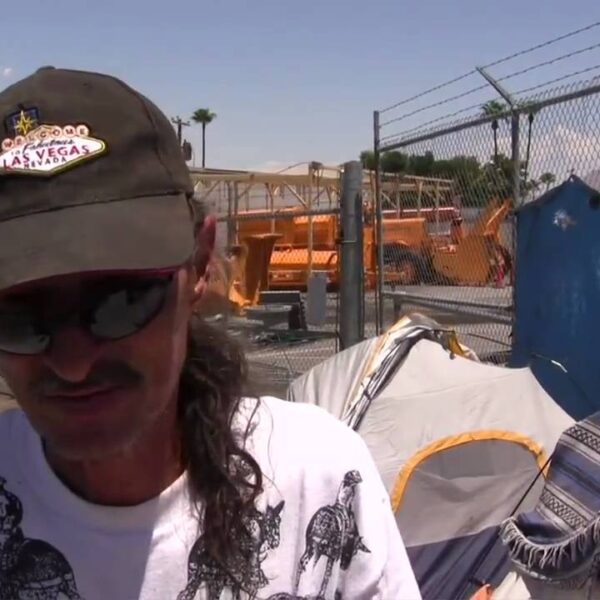Last month, Anna Gorman and Kaiser Health News published an article in The Atlantic highlighting the rise of infectious disease among California’s homeless population.
Typhus, Hepatitis A, Trench Fever, and Shigellosis are all preventable diseases. They have mostly been eradicated in the western world thanks to public health measures emphasizing personal hygiene and public sanitization.
Unfortunately, due to the rapid growth of the homeless population in California, and an inadequate response from federal, state and local legislators, an easily manageable situation has spiraled out of control.
With costs rising and the threat of national public health outbreaks looming ever closer, the time has come to reinvigorate the conversation around how to best address the systemic failures leading to homelessness in California, and across the United States.
Spotlight on a Crisis: California’s Public Health Challenge
In 2017, homeless and marginally-housed Californians made over 100,000 visits to state hospitals. This marks a 28% increase in homeless visits to health care facilities in California over two years.
According to the California Office of Statewide Health Planning and Development, more than 33% of those visits involved a diagnosis for mental health. However, the non-homeless population in California was only diagnosed with mental health issues in 6% of visits.
Many more homeless and marginally-housed individuals and families visited California medical facilities to seek treatment for drug and alcohol addiction, traumatic injuries, skin disorders, HIV and other infectious diseases such as Typhoid and Hepatitis A, which spread rapidly in homeless encampments.
The public health crisis facing California is out of control. It requires rapid mobilization of resources to adequately confront. According to the California Department of Public Health, the 2018-2019 enacted public health budget is $3.21 billion. While this number is significant, Los Angeles on its own budgeted $450 million to address homelessness. $3.21 billion also seems quite low when considering that California is the world’s fifth largest economy.
From 2015 to 2017, California’s homeless population grew by 16%. This accounts to a statewide population of 134,000, though many agree the true number must be higher.
Most agree that ever increasing housing costs are one of the main factors contributing to homelessness in California. I agree with this assessment though I believe the reality is far more intersectional and complex.
Homelessness is being perpetuated by inequality, greed and lack of opportunity. All Americans should have equal access to opportunities and benefits enjoyed by the few.
Saving the American Dream means Ending Homelessness
The homelessness epidemic in California reveals a tragic truth challenging the philosophies and ethics of our American identity. The American Dream is dying, and without rapid life-saving measures, it may be lost forever.
The problem is in the real world, life-saving measures are associated with real costs.
In his 1931 book “Epic of America”, James Truslow Adams described his vision of the American Dream as: “that dream of a land in which life should be better and richer and fuller for everyone, with opportunity for each according to ability or achievement.”
The concept is deeply flawed given the immense economic disparity. At a time when there has never been more wealth, there is an unprecedented rise in homelessness.
According to Inequality.org:
“Over the past century, the share of America’s wealth held by the nation’s wealthiest has changed markedly. That share peaked in the late 1920s, right before the Great Depression, then fell by more than half over the next three decades. But the equalizing trends of the mid-20th century have now been almost completely undone. At the top of the American economic summit, the richest of the nation’s rich now hold as large a wealth share as they did in the 1920s.
The rich don’t just have more wealth than everyone else. The bulk of their wealth comes from different — and more lucrative — asset sources. America’s top 1 percent, for instance, holds more than half the national wealth invested in stocks and mutual funds. Most of the wealth of Americans in the bottom 90 percent comes from their principal residences, the asset category that took the biggest hit during the Great Recession. These Americans also hold almost three-quarters of America’s debt.”
To further articulate this point, consider how Adams expanded on his concept of the American Dream: “It is a difficult dream for the European upper classes to interpret adequately, and too many of us ourselves have grown weary and mistrustful of it. It is not a dream of motor cars and high wages merely, but a dream of social order in which each man and each woman shall be able to attain to the fullest stature of which they are innately capable, and be recognized by others for what they are, regardless of the fortuitous circumstances of birth or position.”
And yet, here we are in 2019. California is the world’s fifth largest economy with a $2.8-trillion-dollar state product in 2017.
California has more than enough wealth, expertise and influence to lead a revolutionary offensive against homelessness. It can transform America back into a land of prosperity and opportunity for all its citizens.
As Goes California, So Goes America…
California must take real steps toward reversing the exponential growth of homelessness and the associated public health crises.
The true costs of homelessness are staggering to behold. They place unnecessary burdens on local, state and federal government. The solution does not lie in reacting to the problem but addressing the root causes.
To end US homelessness, we must address the economic disparity, which has steadily increased over the past century.
“The greatest country, the richest country, is not that which has the most capitalists, monopolists, immense grabbings, vast fortunes, with its sad, sad soil of extreme, degrading, damning poverty, but the land in which there are the most homesteads, freeholds — where wealth does not show such contrasts high and low, where all men have enough — a modest living— and no man is made possessor beyond the sane and beautiful necessities.”
–WALT WHITMAN













